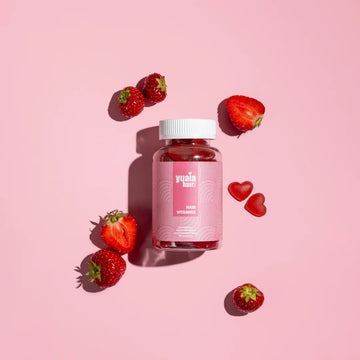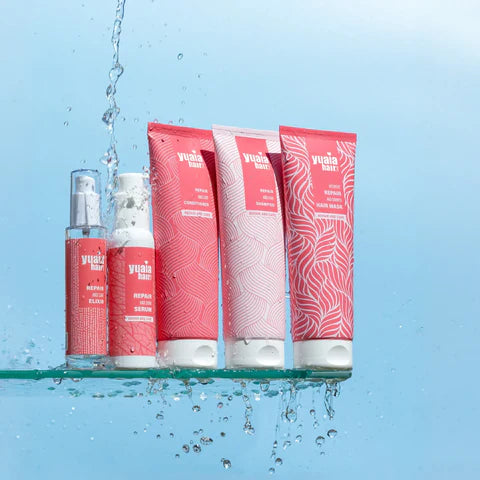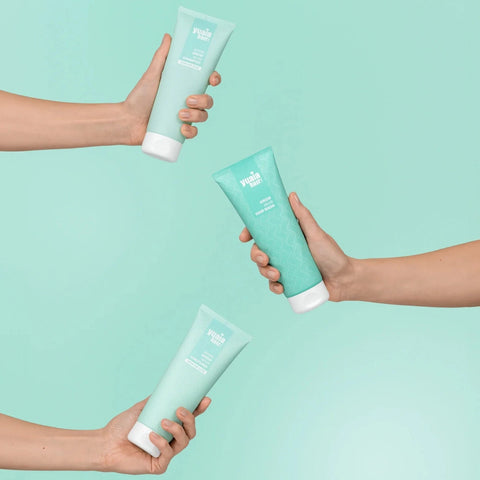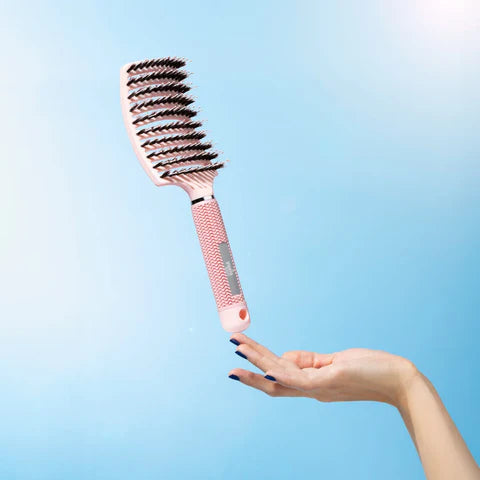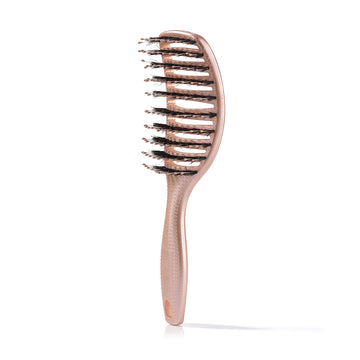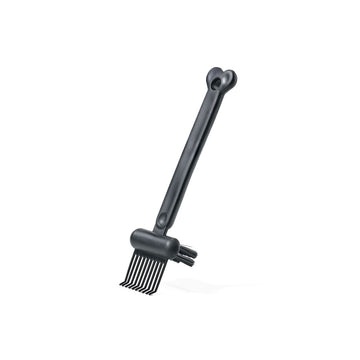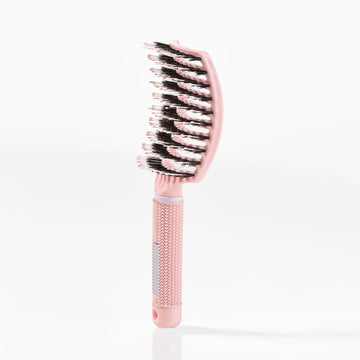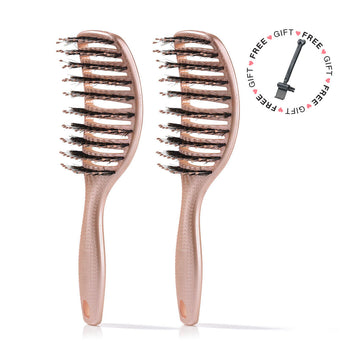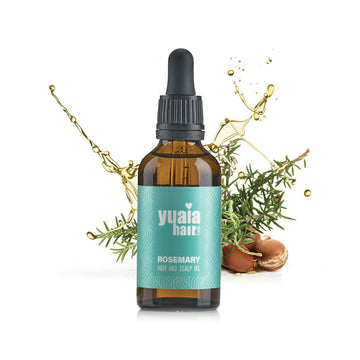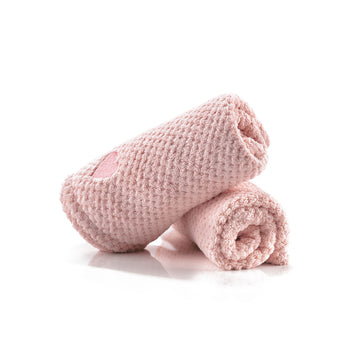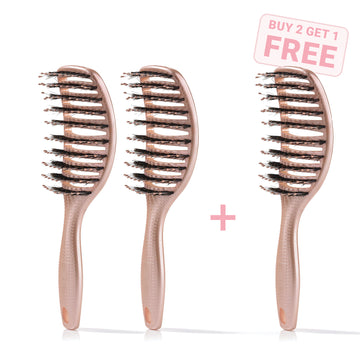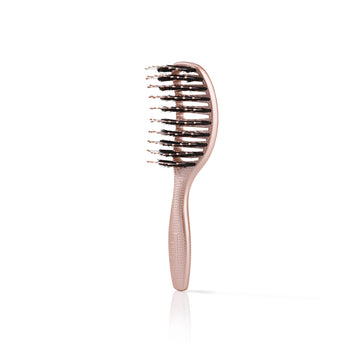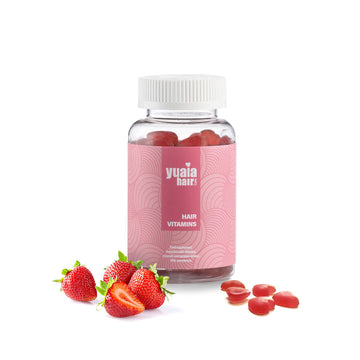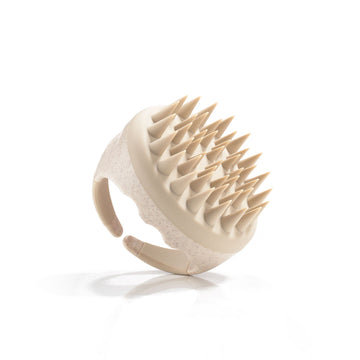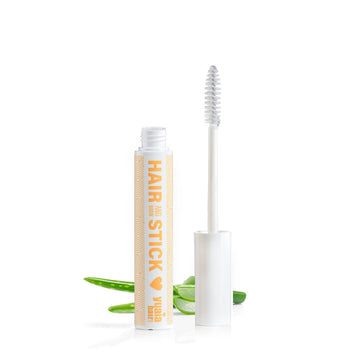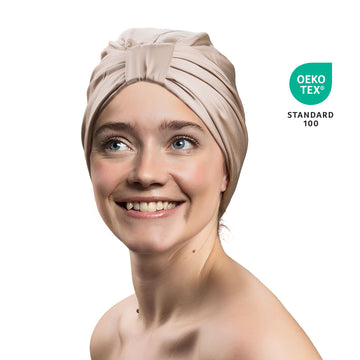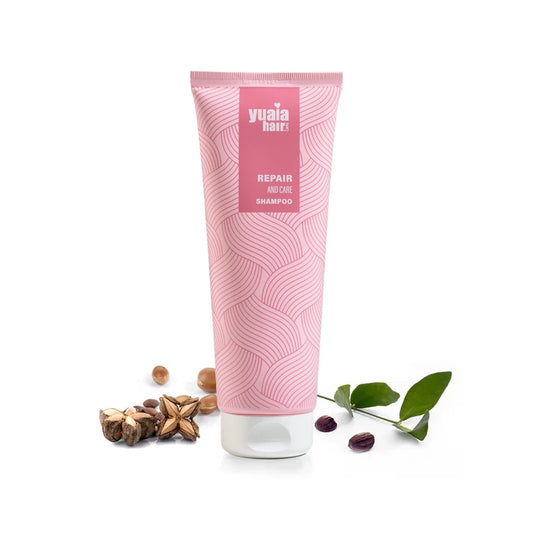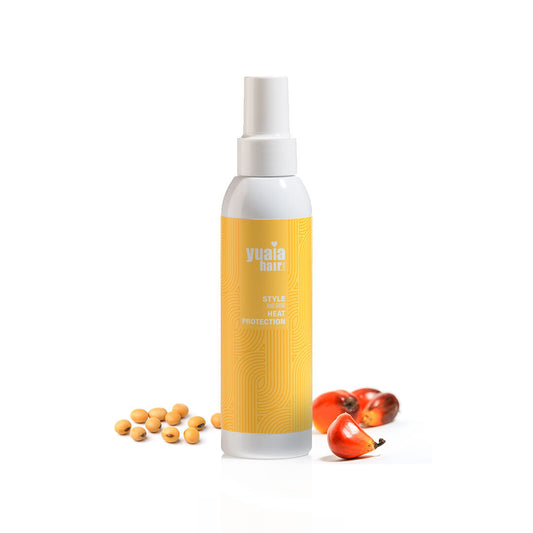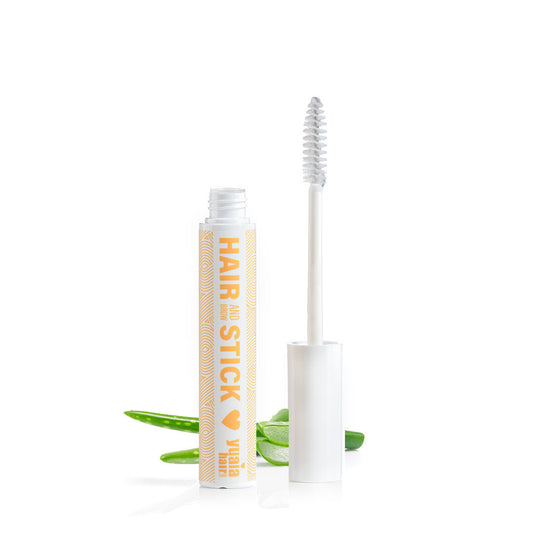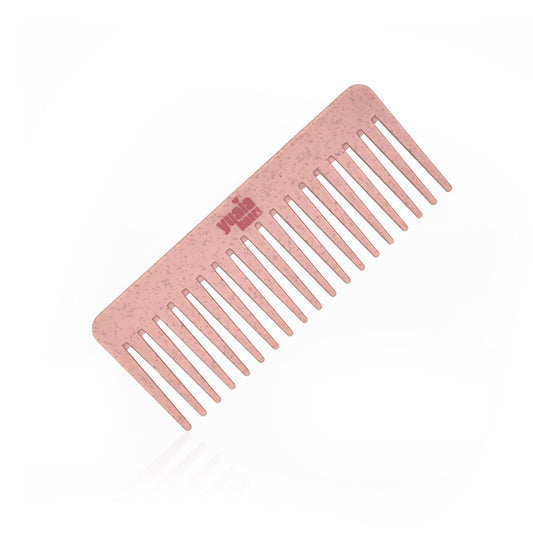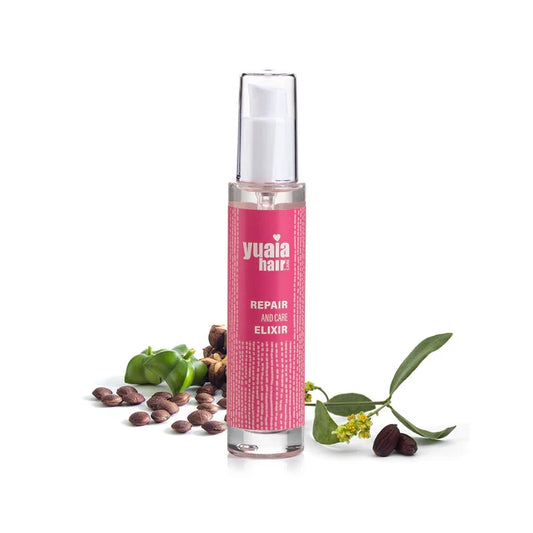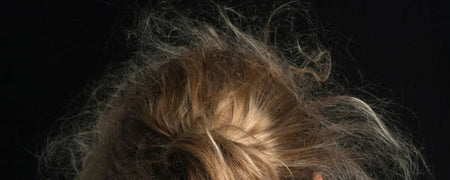
Why does my hair have so many flyaways?
Several factors contribute to the prevalence of flyaway hairs. Environmental conditions play a significant role. High humidity can cause hair strands to swell and become frizzy, while dry air increases static electricity, causing strands to repel each other and stand out.
Hair damage is another common cause. Over-processing with chemical treatments or excessive heat styling can weaken hair, making it prone to breakage and split ends, which contribute to flyaways. Hair type and texture also matter. Fine hair is more likely to be affected by static and environmental factors, while curly or wavy hair may have uneven cuticle alignment, leading to more noticeable flyaways.
Understanding these factors helps identify solutions to reduce flyaways and improve overall hair health.
How to fix flyaways
Managing flyaways requires a balanced approach to haircare that focuses on prevention, protection, and proper nourishment. Start with a gentle cleansing routine using sulfate-free shampoos, which remove dirt and buildup without stripping natural oils. Natural oils are essential for maintaining hair moisture and reducing the likelihood of dry, unruly strands. Regular trims are also vital; by removing split ends, you prevent damaged hair from contributing to flyaways.
Minimizing heat styling is another key factor. Excessive use of heat tools like straighteners, curlers, or blow dryers can weaken the hair cuticle, making it prone to breakage and flyaways. If heat styling is necessary, always apply a heat protectant to shield your strands from damage.
Hydration plays an important role in taming flyaways. Weekly deep conditioning treatments and leave-in conditioners provide long-lasting moisture, keeping hair smooth, soft, and healthy. Using hydrating products tailored to your hair type improves the texture of the strands, reducing the appearance of stray hairs.
Protective hairstyles, such as braids, twists, or buns, help minimize daily exposure to humidity, wind, or friction, all of which can worsen flyaways. Silk or satin pillowcases and accessories can also help by reducing friction and static buildup overnight, keeping hair sleek while you sleep.
For quick fixes, a hair stick like our Hair and Brow Stick is a great on-the-go tool. It smooths flyaways instantly, providing a polished and sleek finish without leaving any stiffness or greasiness.
With a consistent routine and the right products, managing flyaways becomes easier, leaving your hair looking smoother, healthier, and well-maintained.
Use a hair stick for flyways
Hair sticks are effective tools designed to tame flyaway hairs, offering a quick and easy solution for achieving sleek hairstyles. They provide targeted control without the heaviness or residue of traditional gels or sprays, making them ideal for managing unruly strands and creating a polished look.
Our Hair and Brow Stick is a versatile styling product that works on both hair and brows. Its compact design makes it convenient to carry for on-the-go touch-ups, whether at home, work, or while traveling. The formula delivers strong yet flexible hold, keeping flyaways in place without leaving your hair stiff or greasy.
With its simple application, a hair stick allows you to smooth out stray strands instantly, making it a must-have tool for achieving a sleek and polished look throughout the day.

How to use a hair stick effectively
Using a hair stick is a quick and efficient way to manage flyaways and achieve a sleek, polished look. Follow these steps for the best results:
-
Prepare your hair: Ensure your hair is clean, dry, and styled as desired. Flyaways are easier to manage when the hair is prepped and free from excess oils or moisture.
-
Apply the product: Remove the cap from the Hair and Brow Stick. Hold the stick firmly and get ready to target flyaways.
-
Target flyaways: Gently glide the stick over the areas where flyaways are most noticeable, such as the top of the head, along the hairline, or around your parting. Apply light, even pressure to smooth down the strands.
-
Blend: Use your fingers or a fine-tooth comb to blend the product into your hair for a seamless, natural finish. This ensures your hair looks smooth without any visible residue.
-
Repeat as needed: For stubborn flyaways, reapply a small amount of product until the desired result is achieved. A little goes a long way, so build it up gradually.
-
On-the-go touch-ups: Keep the hair stick in your bag for quick fixes throughout the day. Its compact size makes it perfect for managing flyaways wherever you are.
Incorporating our Hair and Brow Stick into your routine makes taming flyaways effortless, giving you a sleek and polished appearance that lasts all day.
Other tips for smooth and flyaway-free hair
Achieving smooth, flyaway-free hair requires consistent care and the right techniques. Here are some effective strategies to prevent and manage flyaways:
-
Hydration and conditioning:
Dry hair is more prone to flyaways. Use a hydrating shampoo and conditioner to maintain moisture balance. Look for products specifically designed to combat dryness and frizz, as they help strengthen strands and reduce unruly hairs. -
Limit heat styling:
Excessive use of heat tools like blow dryers, straighteners, and curling irons can damage the hair cuticle, causing breakage and flyaways. Always apply a heat protectant spray before styling to shield your strands and minimize damage. -
Protective hairstyles:
Styles like braids, buns, or twists keep hair secure and reduce exposure to environmental factors like humidity and wind. These hairstyles are especially useful during harsh weather conditions. -
Use of appropriate tools:
Opt for wide-tooth combs and brushes with natural bristles to detangle hair gently, reducing the risk of breakage. When drying hair, switch to a microfiber towel to minimize friction and prevent static buildup. -
Regular trims:
Schedule hair trims every 6-8 weeks to remove split ends. Split ends weaken hair strands and contribute to flyaways, so regular maintenance keeps hair healthy and smooth. -
Maintain a healthy environment:
Use a humidifier at home to add moisture to the air. Dry air increases static electricity, which causes flyaways, so maintaining proper humidity levels can help keep hair manageable.
By implementing these tips, you can minimize flyaways, improve hair health, and achieve a smoother, more polished look. A combination of proper hydration, protection, and regular maintenance will help keep your hair looking its best.
Recommendations for suitable hair products
Selecting the right products is key to managing and preventing flyaways. Here are the most effective product categories to incorporate into your routine:
-
Leave-in conditioners:
These provide continuous hydration throughout the day, keeping hair moisturized, soft, and smooth. They are lightweight and help reduce dryness-induced flyaways without weighing the hair down. -
Anti-frizz serums:
Serums form a protective barrier around the hair, locking in moisture and shielding strands from humidity. They reduce frizz and flyaways while adding a sleek, glossy finish. -
Smoothing creams:
These creams smooth the hair cuticle, taming flyaways and creating a polished, refined appearance. They are perfect for achieving sleek styles and managing unruly strands. -
Hair oils:
Lightweight oils nourish and hydrate dry, brittle hair, reducing breakage and preventing flyaways. They add shine and strengthen hair to keep it smooth and healthy. -
Heat protectant sprays:
Heat protectants shield hair from damage caused by styling tools like blow dryers, straighteners, and curling irons. Protecting the hair shaft helps minimize breakage and flyaways over time.
Incorporating these products into your haircare routine will help manage flyaways effectively, ensuring smoother, healthier, and more manageable hair.
Smooth strands ahead: Your path to taming flyaways
Achieving smooth, flyaway-free hair starts with consistent care and the right products. By adopting healthy haircare practices like hydration, reducing heat styling, and using protective tools, you can significantly minimize flyaways. Incorporating products such as leave-in conditioners, smoothing creams, and anti-frizz serums helps control unruly strands while improving your hair’s overall texture and appearance.
For quick fixes, consider adding our Hair and Brow Stick to your routine. Its compact design makes it the perfect on-the-go solution to smooth flyaways and achieve a polished, sleek look whenever you need it.
FAQ about flyaways
What causes flyaways?
Flyaways are caused by a combination of factors. Hair damage from excessive heat styling, chemical treatments, or rough brushing can lead to breakage, causing shorter strands to stand out. New hair growth is another common cause, as shorter hairs that are still growing may not yet blend in with the rest of the hair. Dryness and static electricity also play a role, especially in environments with low humidity, as they cause hair strands to repel each other. Additionally, environmental factors such as wind and high humidity can disrupt the hair’s cuticle, making flyaways more noticeable.
Which hair types are more prone to dealing with flyaways?
Flyaways can affect all hair types, but fine, curly, or damaged hair is often more susceptible. Fine hair is lightweight, making it more prone to static and environmental factors like wind. Curly and wavy hair has a natural structure that can cause uneven alignment of the cuticle, resulting in stray strands. Dry or damaged hair, which lacks proper hydration and structure, is also more likely to break, contributing to flyaways.
What’s the difference between flyaways and frizzy hair?
Flyaways are typically individual, short strands that stand apart from the rest of the hair. They often result from breakage, static electricity, or new hair growth. Frizzy hair, on the other hand, involves many strands that appear misaligned, creating a fuzzy or puffy look. Frizz usually occurs when the cuticle is raised, allowing moisture to penetrate the hair shaft and cause it to swell. While flyaways are more localized, frizz tends to affect larger sections of the hair.
 2-5 day delivery
2-5 day delivery
 25.000+ satisfied customers
25.000+ satisfied customers
 Satisfaction Guarantee
Satisfaction Guarantee

